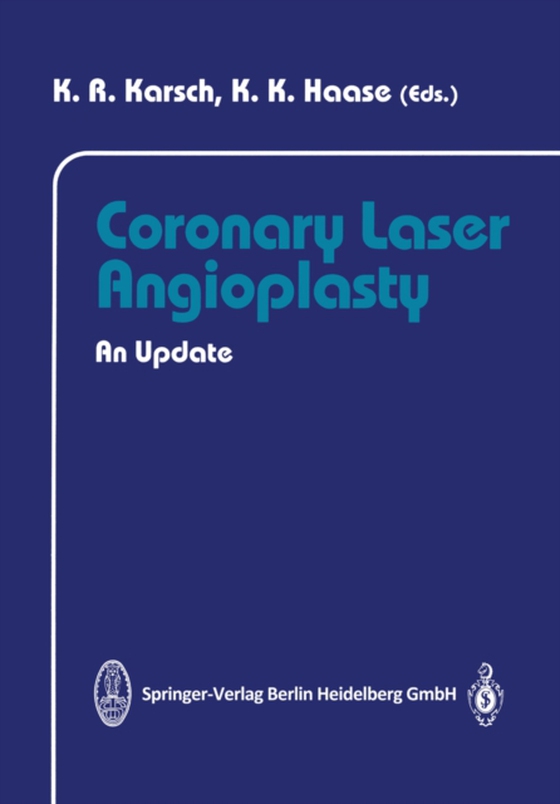
Coronary Laser Angioplasty e-bog
436,85 DKK
(inkl. moms 546,06 DKK)
Since the development of the first laser generator by Maiman in 1960, laser energy has gained increased interest and has subsequently been used in various fields of applica- tion. Due to its high energy density, combined with a sharply defined irradiation field, laser has aroused great expectations, especially since laser beams have been used very successfully in various fields especially techn...
E-bog
436,85 DKK
Forlag
Steinkopff
Udgivet
9 marts 2013
Genrer
Cardiovascular medicine
Sprog
English
Format
pdf
Beskyttelse
LCP
ISBN
9783662064160
Since the development of the first laser generator by Maiman in 1960, laser energy has gained increased interest and has subsequently been used in various fields of applica- tion. Due to its high energy density, combined with a sharply defined irradiation field, laser has aroused great expectations, especially since laser beams have been used very successfully in various fields especially technology and medicine. Medical and surgical applications of the laser were among the first and have been of undisputed benefit in, for example, ophthalmologic interventions such as coagulation of the retina, or for endoscopic tumorectomy in the bronchial, gastrointestinal and urogenital tracts. Consequently, considerable research effort was made to also apply laser techniques in interventional cardiology for the treatment of atherosclerosis, aimed at removing plaque material from stenosed tissue or occluded ateries and recanalizing tough and calcified segments unsuitable for the well-extablished technique of balloon dilatation. Ablating atheroma rather than pushing it aside was thought to achieve better results. However, it was found that the laser may create rough-edged cuts partly with substantial thermal or mechanical damage to the surrounding tissue, consequently provoking preconditions for unwanted restenosis. Different types of laser generators and probes have therefore been investigated in arterial vessels, mostly focusing on indirect laser effects. Intravasal probes with laser- heated metal tips were used, as well as balloon catheters with an incorporated laser fiber designed to heat the surrounding tissue outside the balloon and to, ineffect, "e;iron out the plaque"e;.
 Dansk
Dansk

